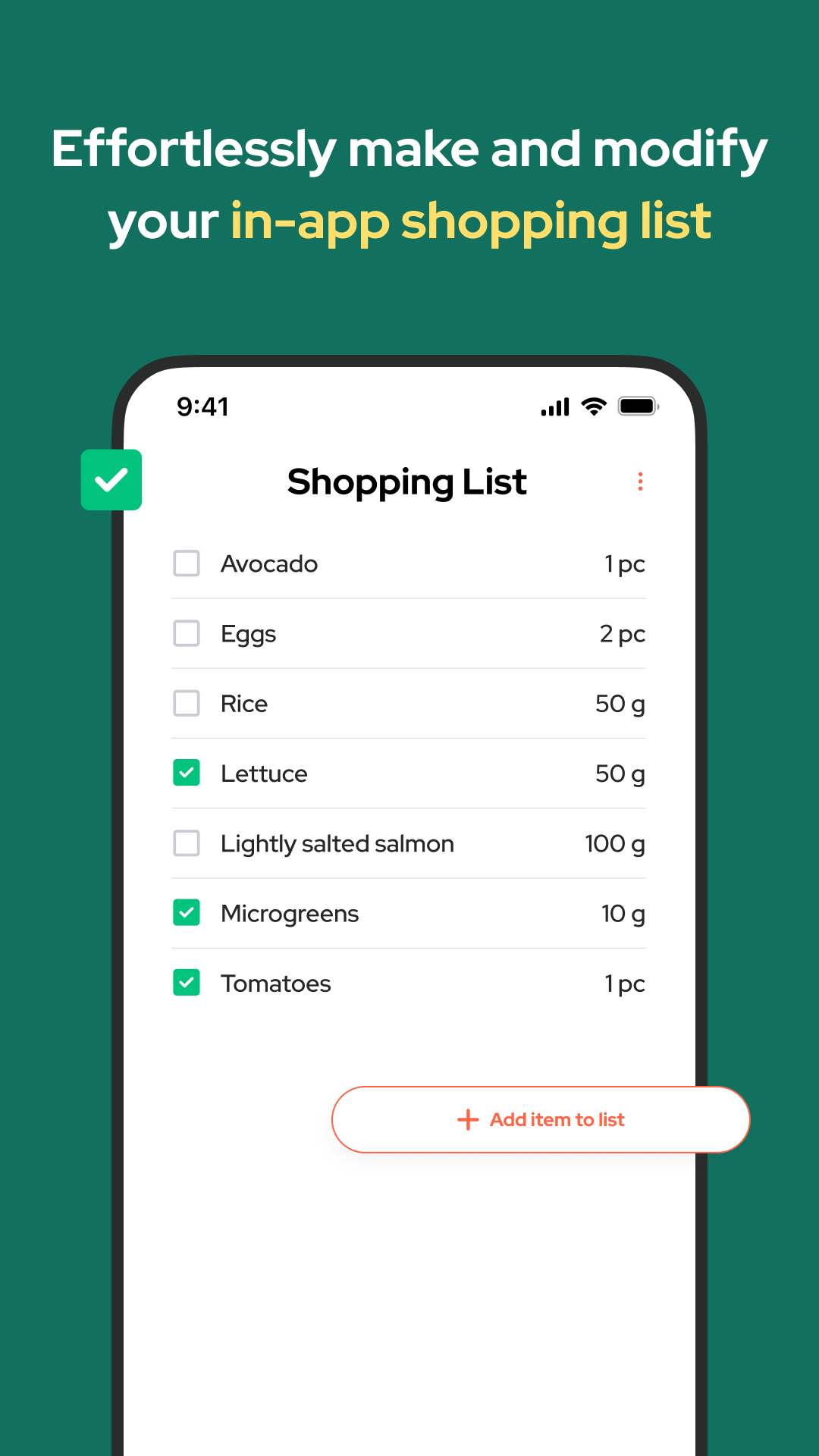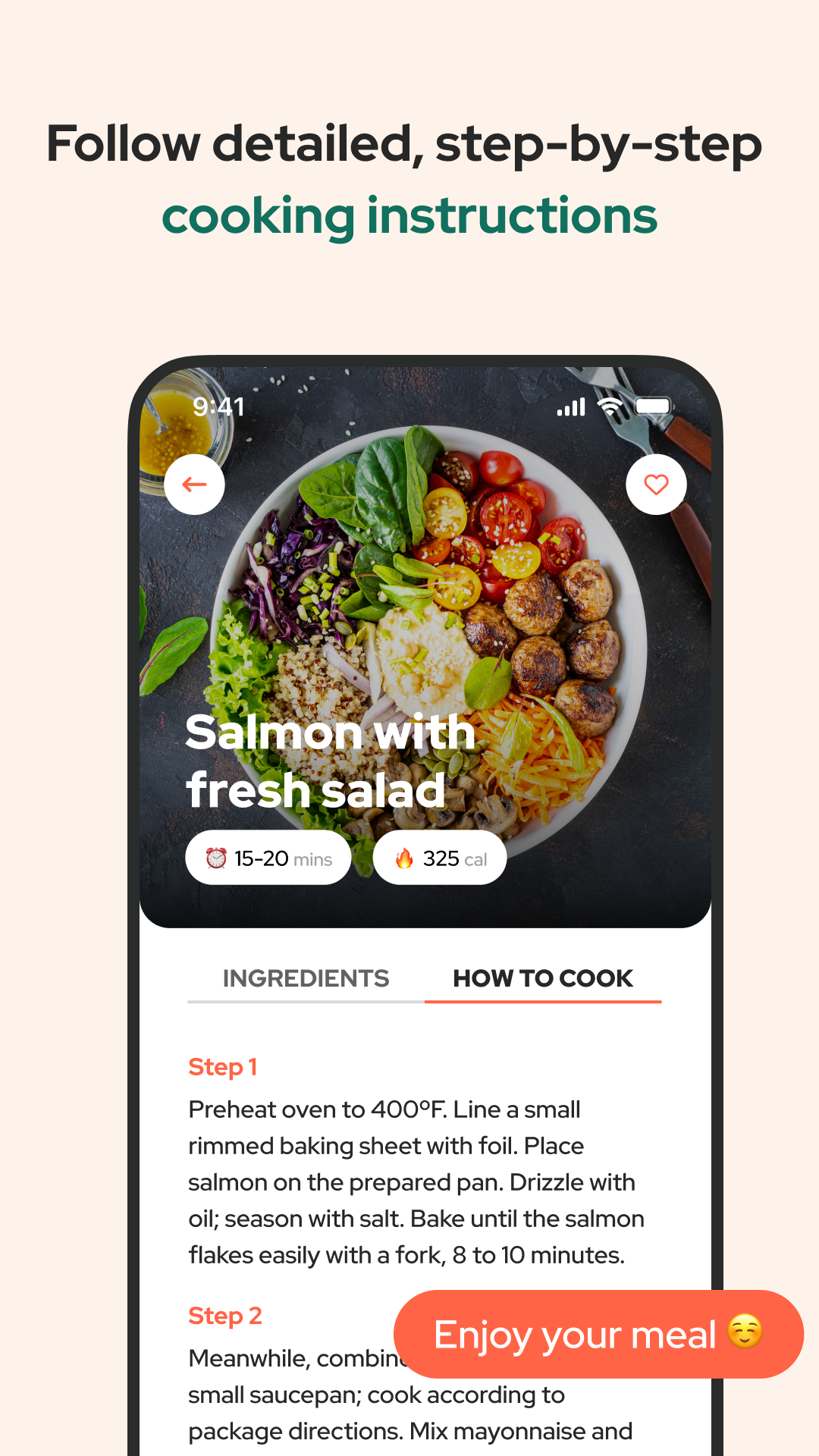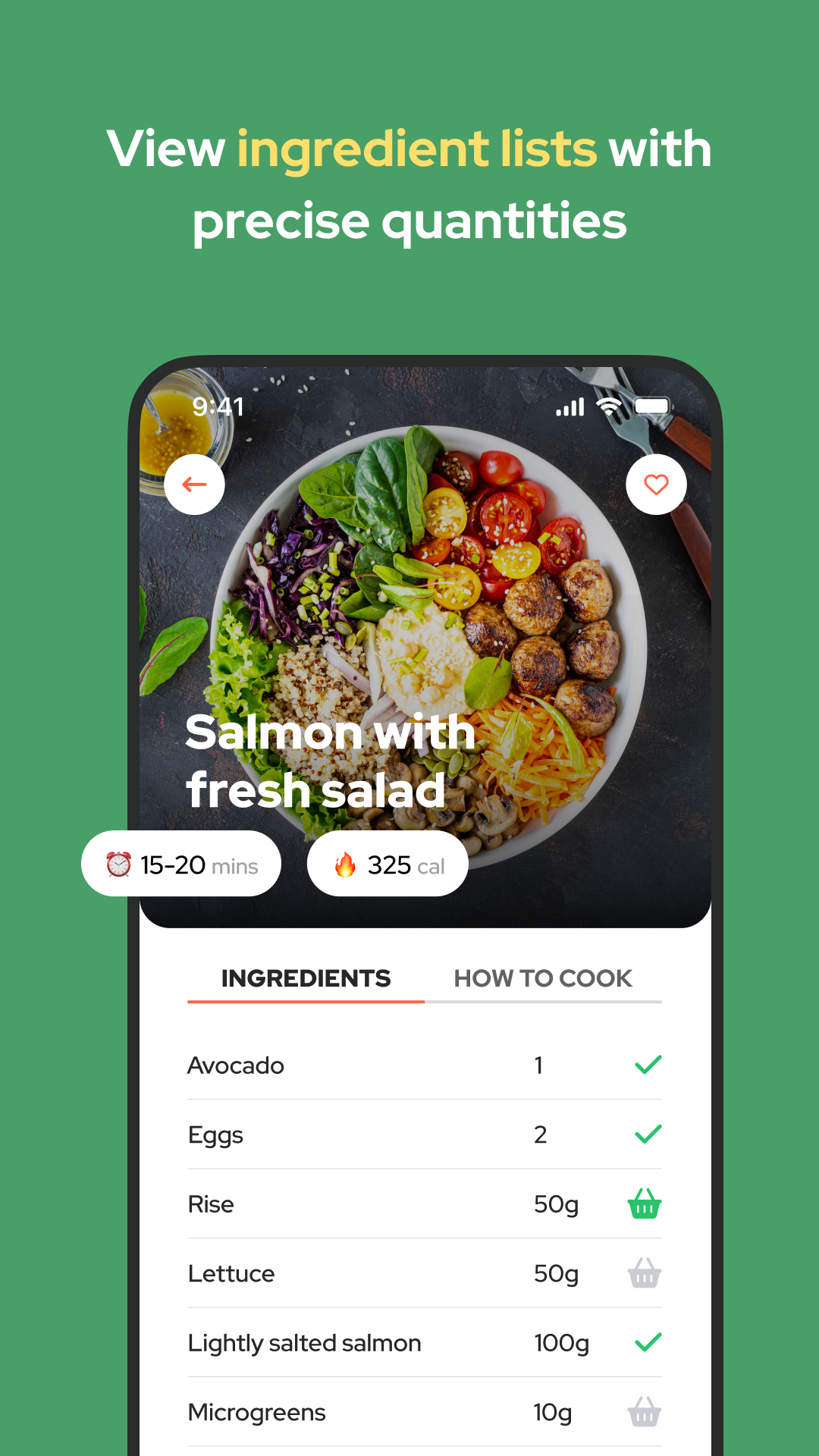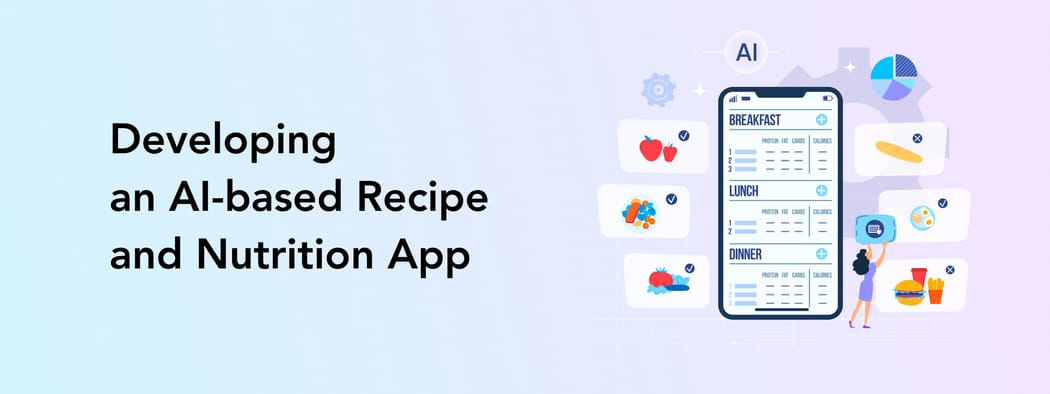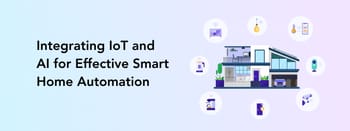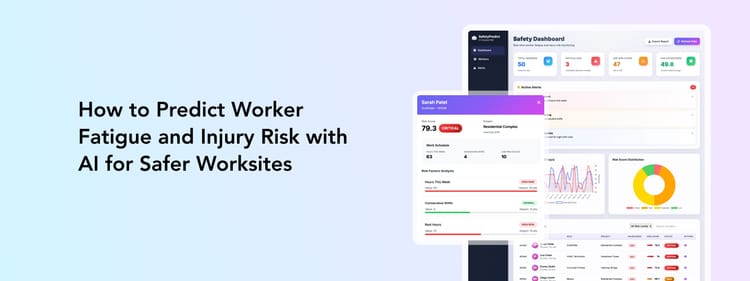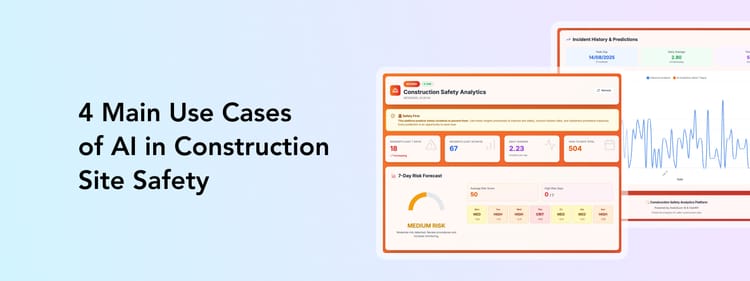Coming up with fresh and nutritious meal ideas every day can be quite a challenge. It’s even harder when you’re trying to use up those veggies sitting in your fridge or sticking to specific dietary needs like keto or gluten-free.
Fortunately, technology is here to help. Recipe apps can now suggest meal ideas based on the ingredients you have, your diet preferences, and more. With the power of AI, these apps can make the user experience even better, offering personalized recipe recommendations, scanning your fridge for ingredients, and much more.
In this article, we’ll explore the different types of recipe apps, where to source recipe databases, must-have and advanced features for nutrition apps, key integrations, and a step-by-step guide on how to develop a smart cooking app.
Types of Recipe Apps
There’s a recipe app for every taste. Joking aside, there are different types of cooking apps, and each of those targets a different audience.
Before getting down to developing your nutrition app, consider who you are creating the application for. Some ideas might include
- Novice cooks, like students, need simple, quick, and detailed recipes.
- Experienced cooks who are looking for more complex and authentic dish ideas.
- Users in certain regions who want to prepare traditional food with available ingredients. For example, you can create a cooking application for Mexicans who want to prepare authentic, homemade meals with the ingredients they can find in any supermarket. Alternatively, it can be an app for those who moved from their home country or have an interest in a particular cuisine and want to find appropriate substitutes.
- Users with dietary restrictions, like vegans, vegetarians, those who follow a gluten-free or keto diet, users with allergies, etc. Finding adaptable recipes in general cooking apps might be hard, so why not offer a separate, tailored solution?
- Those who want to cook healthy recipes or have weight loss/weight gain goals. These recipes can also include information on calorie and nutrient contents.
- Home cooks interested in specific chefs, restaurants, or cuisine recipes. A cooking app can focus on recipes created by famous chefs or food from different cuisines, like Italian.
Options are extensive, and you can always choose something that will attract a particular audience and give you a competitive advantage. Remember, it’s best if you can offer a recipe application that has ideas not otherwise easily found.
Alternatively, you can come up with an all-in-one recipe app that can suit users with different needs and adapt the recipes through filters and AI integration. That’s what we went for with our AI Chef’s Cookbook app at Perpetio.
Let’s now explore different recipe app types.
Recipe collection app
A recipe collection app serves as a digital cookbook where users can store and organize all their favorite recipes in one place. It allows for easy searching by ingredients or cuisine type, making meal planning faster. Perfect for users who love trying out new recipes and want a simple way to save them.
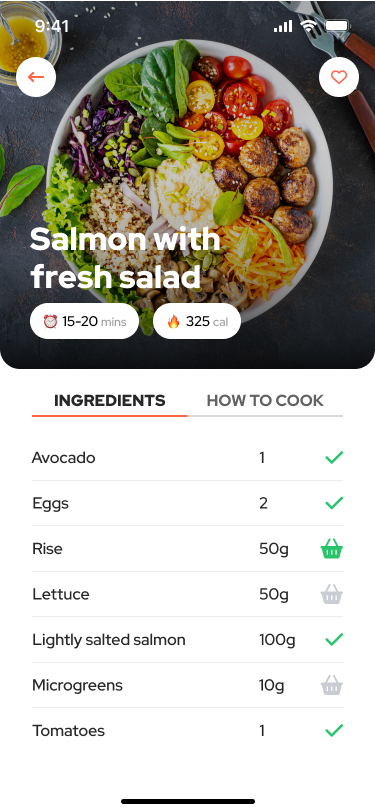
Pantry and fridge app
A pantry app helps users track the ingredients they have at home and suggests recipes based on what's available, helping to reduce food waste and make efficient use of groceries.
As an additional or more advanced feature, some pantry apps incorporate fridge scanning through image recognition technology. This allows users to simply scan the contents of their fridge and get instant recipe suggestions without needing to manually input ingredients.
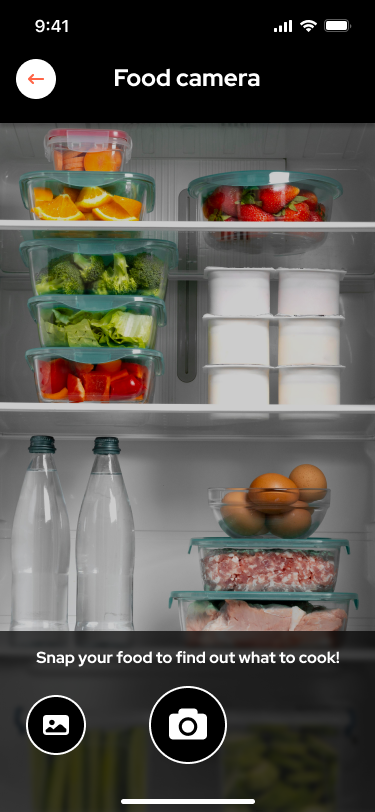
Recipe sharing app
This type of app is built around a community where users can upload and share their own recipes, offering comments and ratings on others’ dishes. It's great for home cooks who enjoy contributing and discovering new ideas from others.
Meal planning app
A meal planning app helps users organize their meals for the week or month. It often comes with features to select meals based on dietary preferences or schedules. Perfect for busy individuals looking to plan ahead and ensure they follow a balanced diet.
Grocery shopping app
This app simplifies grocery shopping by creating automated shopping lists based on selected recipes or meal plans. Users can even integrate it with local stores for easier shopping experiences. Ideal for those who want a streamlined shopping process.
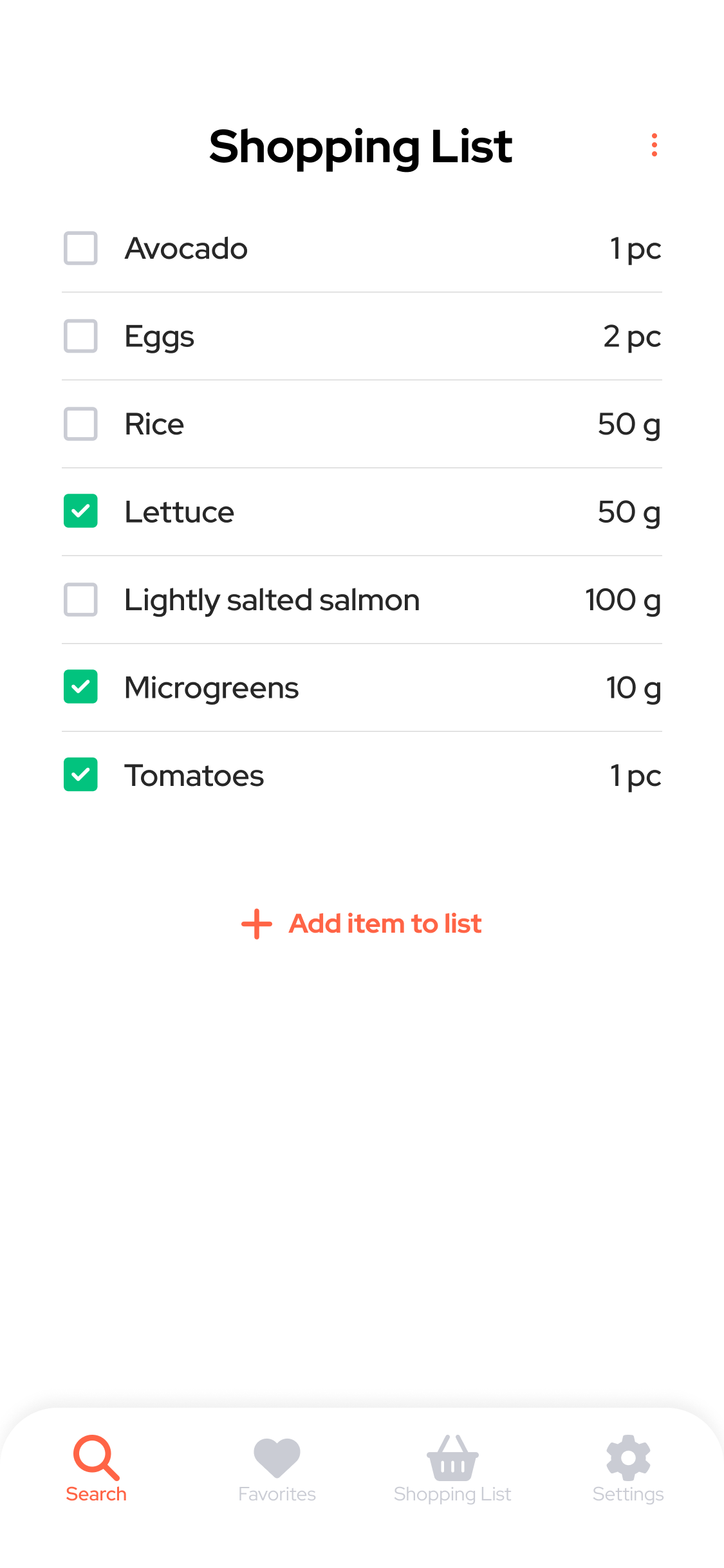
Nutrition app
A nutrition app goes beyond recipes to offer calorie and nutrient tracking, healthy recipe suggestions, weight management, and daily meal planning tools. Great for users with specific health goals, whether it’s losing weight, gaining muscle, or maintaining a balanced diet.
It's common not to focus on one app functionality but to integrate features from several cooking app types into one holistic solution that can help users shop, cook, and more.
Where to Get Recipes for a Cooking App?
You might have a very reasonable question of where to find the recipes for a cooking app. There are several options you can consider.
Free recipe database API
A free recipe database API provides a quick and cost-effective way to fill your app with various recipes. It’s easy to integrate and offers access to a wide range of dishes. However, many other apps may be using the same database, which means your content won’t stand out, and the quality of recipes might be inconsistent.
Paid recipe database API
A paid recipe database API offers higher-quality, more exclusive content. These APIs often include recipes tailored to specific diets or preferences, providing a more reliable user experience. While this option enhances recipe diversity, it comes with ongoing costs and doesn’t guarantee unique content, as other apps may also use the same database.
Recipes added by users
Allowing users to contribute their own recipes helps create a sense of community and enriches your app's content. Over time, this user-generated database can grow rapidly, offering a wide variety of options. However, early on, you may need to motivate users to contribute when your app is still gaining popularity, and not many people use it. Managing and maintaining recipe quality is also a key consideration.
AI API
Using an AI-powered API enables recipe personalization based on user preferences, dietary restrictions, or available ingredients. This approach is highly adaptable and can generate a wide range of dishes tailored to individual users. While AI is efficient and scalable, its recipes may lack the creativity or complexity of those written by culinary experts.
Custom recipes and a private database
Building your own recipe database with custom content ensures that your app offers unique, high-quality recipes that no other app can replicate. Whether you are a chef, restaurant, or cooking enthusiast, adding your own creations guarantees exclusivity. However, this approach requires more time and resources to gather and input the recipes, making it a more labor-intensive option upfront.
Must-have Features for a Cooking App
While there are many types of recipe apps out there, most of them share the same core features. Let’s discover the necessary features of a cooking app.
Home screen
The home screen is the first thing users see, so it should feature recent recipes, personalized recommendations, or popular dishes based on user preferences. AI can help show recipes that match health goals or favorite ingredients, making it easy for users to find inspiration right away.
Recipe search and list
Users need a strong search option to find recipes by ingredient, cuisine, prep time, complexity, or course. The more filters available, the easier it is for users to discover the perfect dish, no matter their cravings or dietary restrictions.
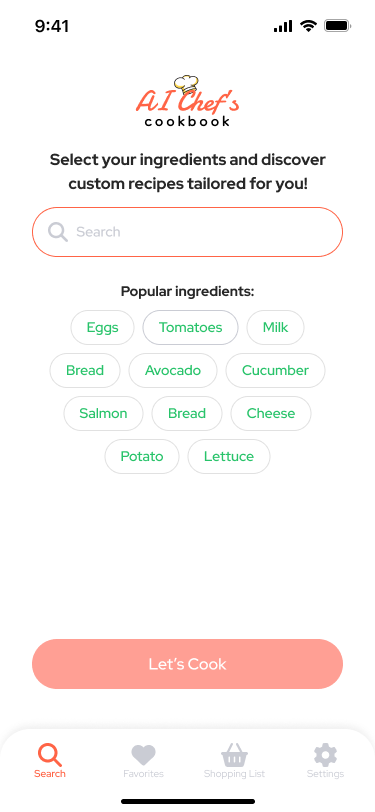
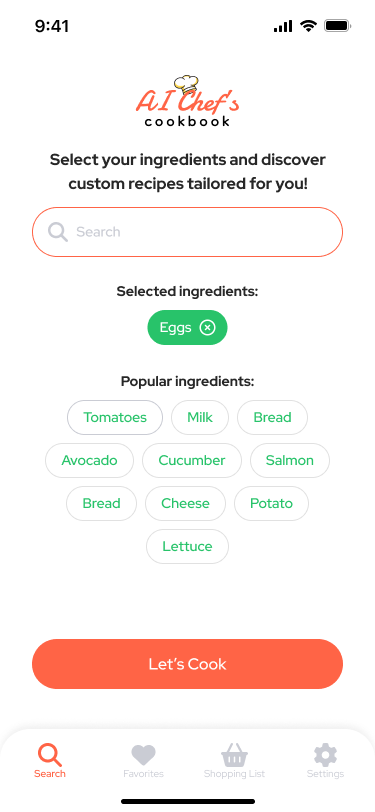
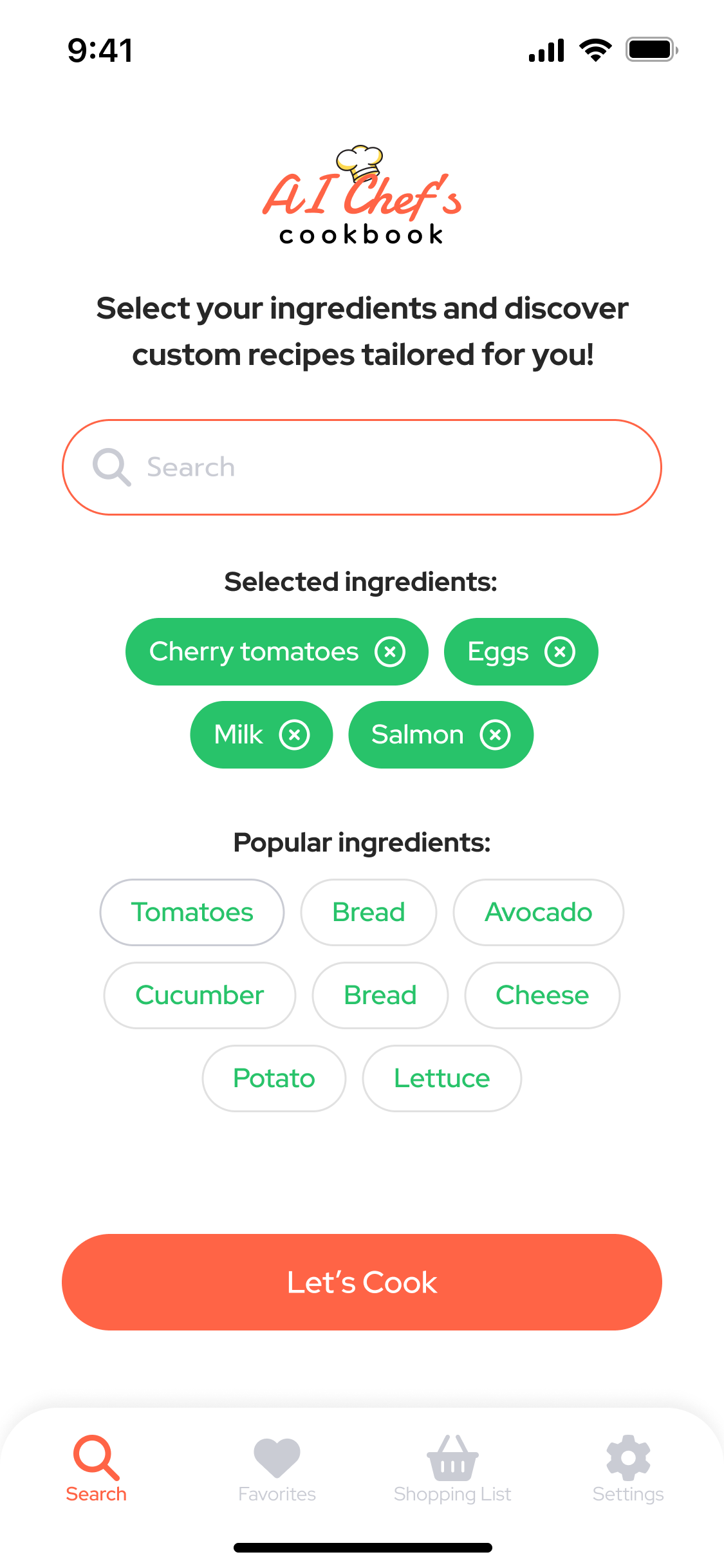

Perpetio's AI Chef's Cookbook app
Recipe page
A recipe page should include step-by-step instructions with photos, videos, or text, plus a list of ingredients. It’s also helpful to let users share feedback, photos, or comments for added interaction.
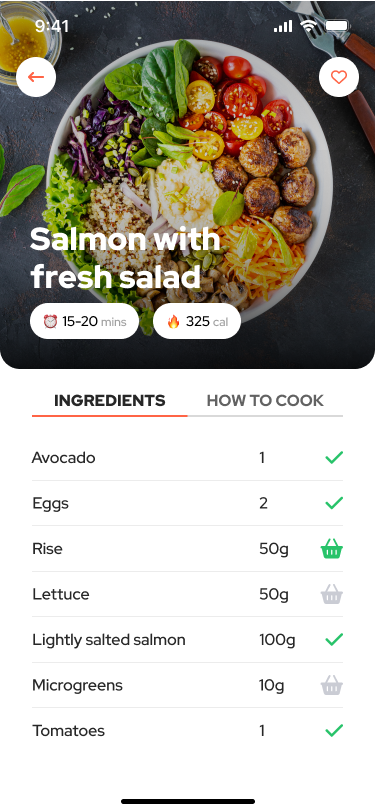
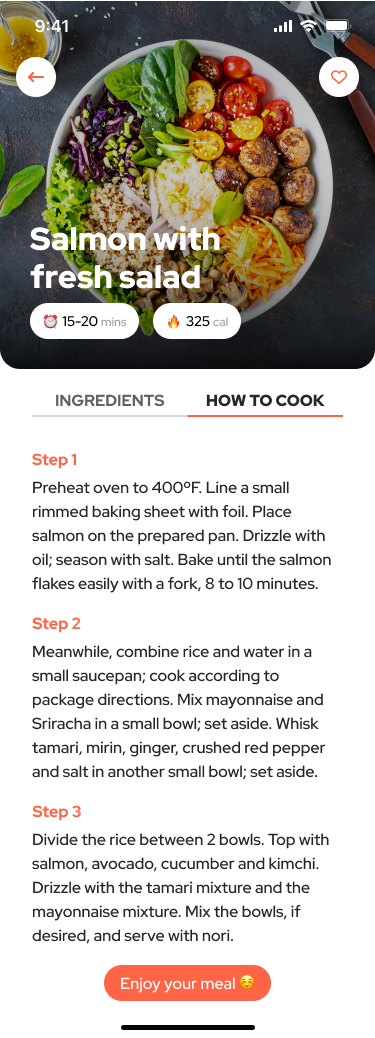
Perpetio's AI Chef's Cookbook app
Sign-in and user profile
Users should be able to easily save their preferences, payment info, and favorite meals in their profile. This feature is key for a personalized experience, allowing users to track their health goals or meal plans.

Notifications
Notifications are a great way to keep users engaged. They can be used to remind users about saved recipes, send new recommendations, remind them about shopping lists, and more.
Favorite or saved recipes
A favorite or saved recipe section lets users bookmark meals they love, making it easy to revisit them later. Over time, this becomes a personal cookbook full of their top picks.
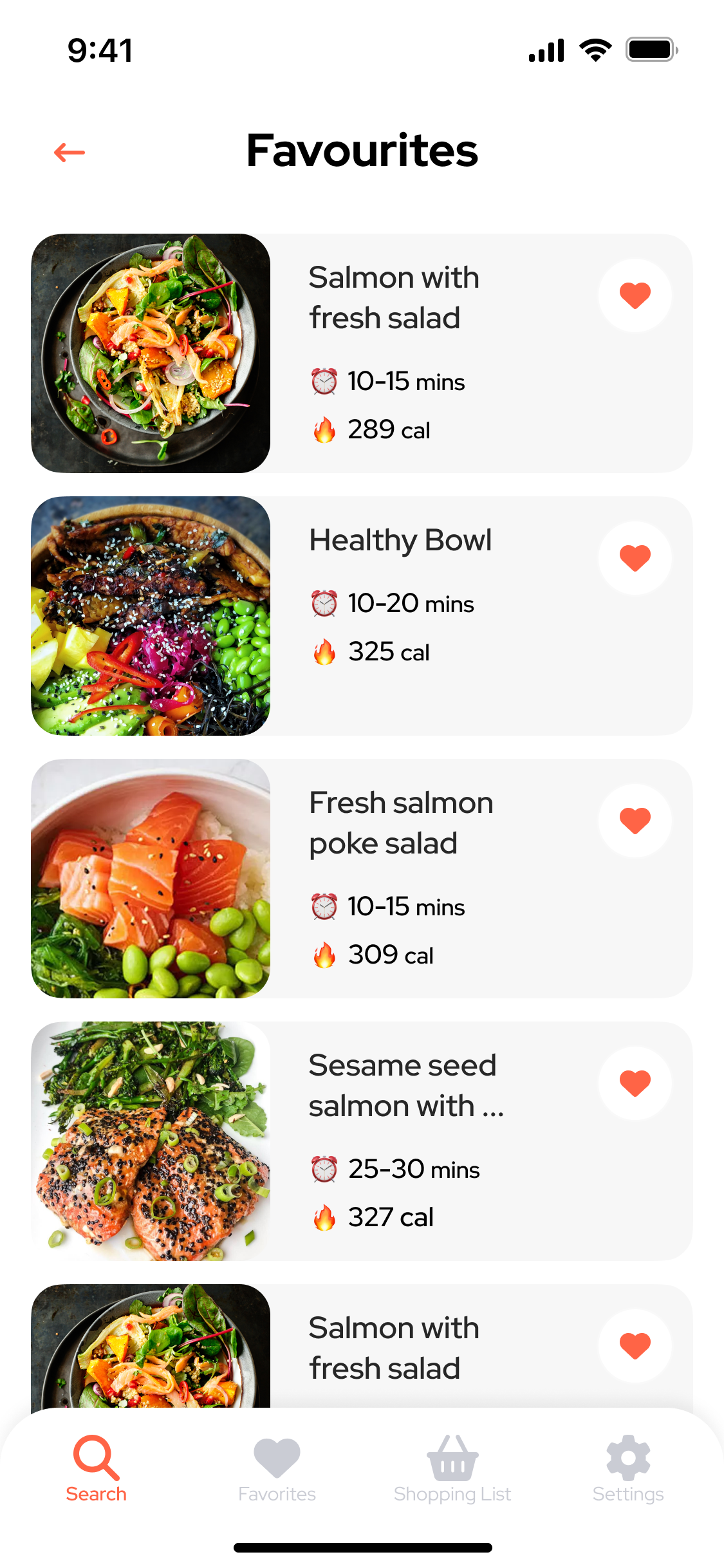
Settings
Settings allow users to customize notifications, set dietary preferences, choose the subscription plan, or select their language. It gives them control over the app, so they can tailor it to their specific needs.

Competitive Features for a Recipe App
You can get by with just the core cooking app features given you chose an interesting niche and know what attracts your target audience.
At the same time, adding some unusual features will help your app gain its competitive advantage and stand out in the market of numerous cooking apps.
Here are some features that can make your recipe application more interesting.
AI integration
AI can elevate your app by offering personalized recipe suggestions based on the user’s available ingredients, dietary restrictions, or even their favorite cuisines. For example, with Perpetio’s AI-powered Chef’s Cookbook app, users can get customized recipe ideas that perfectly match what’s in their pantry or fridge.
Fridge scanner
With image recognition technology, your app can suggest recipes by scanning the items in a user’s fridge or pantry. It helps reduce food waste and saves time by offering meals based on what's already available—perfect for busy people who don’t want to make an extra grocery run.
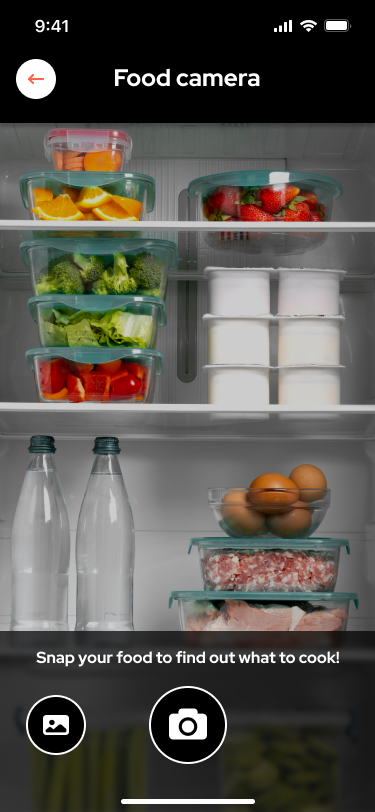
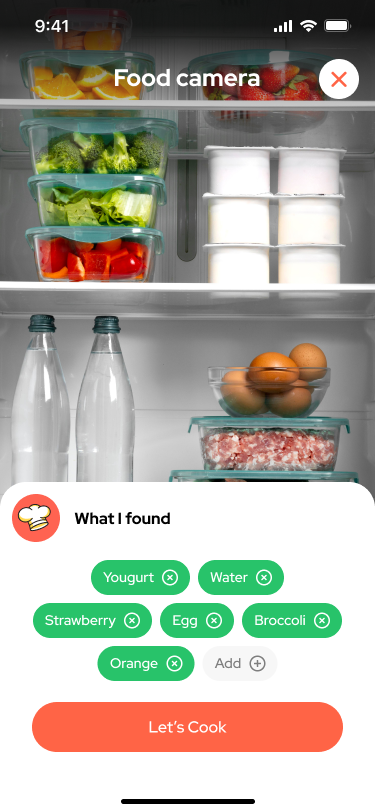
Perpetio's AI Chef's Cookbook app
Shopping list
A built-in shopping list feature allows users to easily add items from recipes to their list. Some apps even offer suggestions of what else to add based on their cooking preferences or upcoming meals, making grocery shopping faster and more organized.
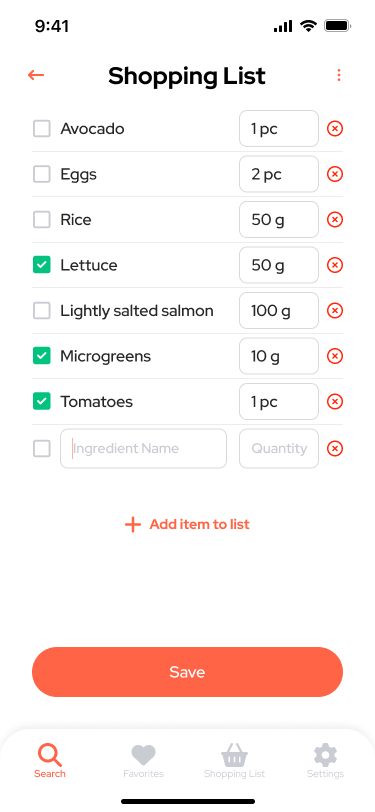
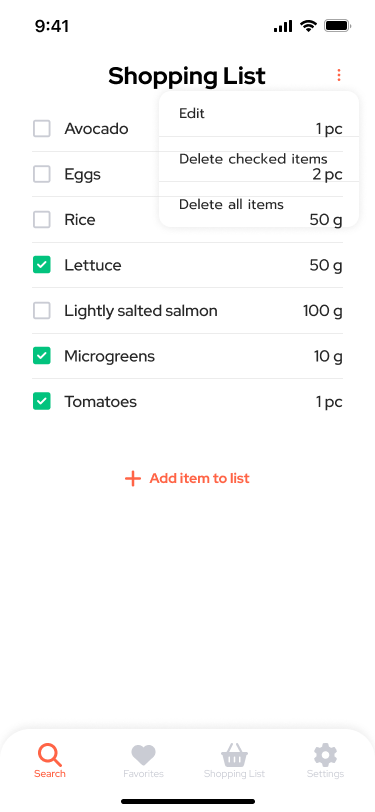
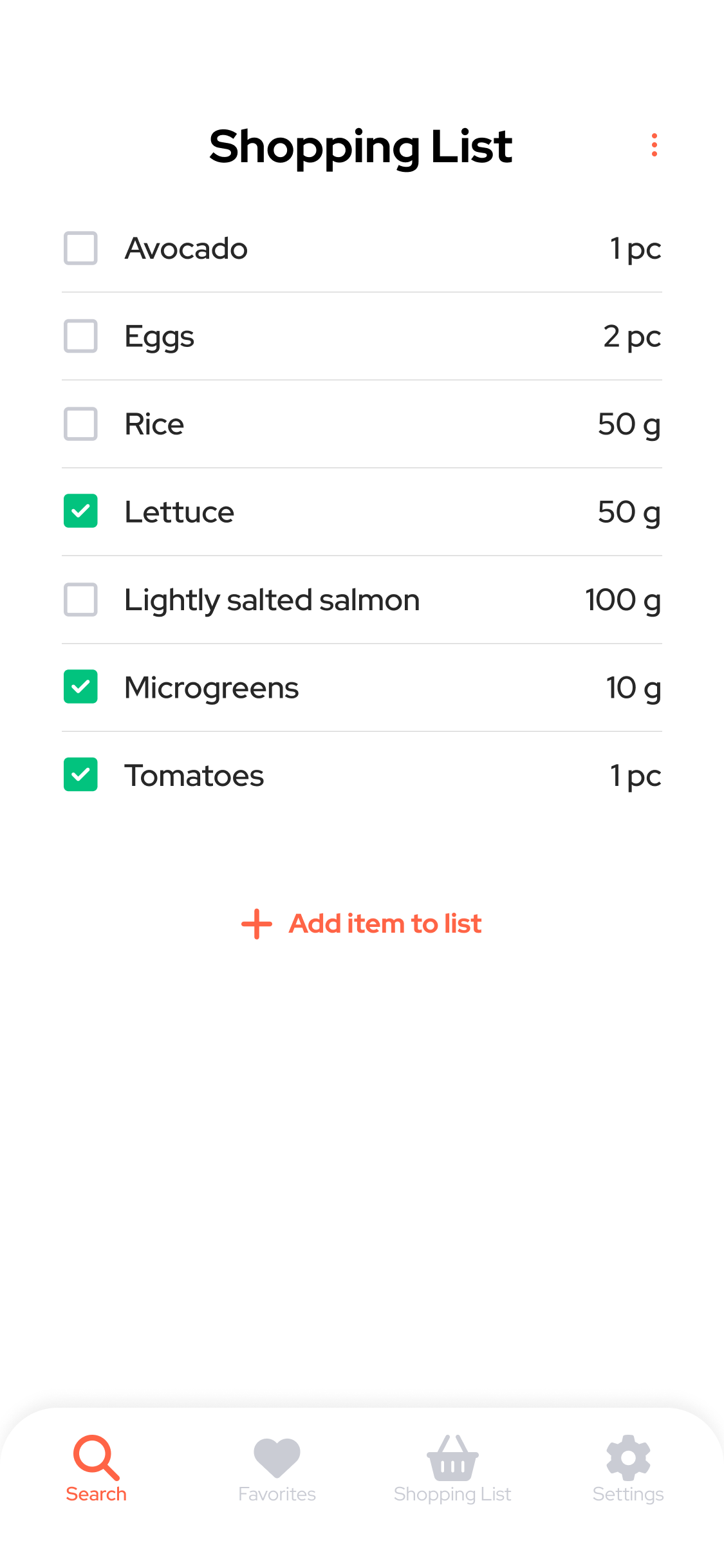
Perpetio's AI Chef's Cookbook app
Challenges and goals
For nutrition-focused apps, setting challenges or goals can motivate users to eat healthier or try new diets. Whether it’s a 30-day healthy eating challenge or tracking progress on a keto or vegan plan, these features engage users while helping them reach their wellness goals.
Social sharing
It’s a good idea to allow users to share their favorite recipes, completed challenges, or even cooking photos with friends and family on social media. This feature not only builds community but also helps spread the word about your app through user-generated content.
Monetization
If you're planning to monetize your app, there are several options to consider:
- In-app ads: Generate revenue by showing ads to users while they navigate the app.
- Freemium model: Offer a free version with basic features and charge for premium functionality.
- Paid app: Charge users upfront to download the app, often with premium features included.
For example, with our AI Chef's Cookbook app, we chose a paid app with a free trial. This approach allows users to explore the app and understand its value before committing, motivating them to purchase the full version once they've experienced the benefits.
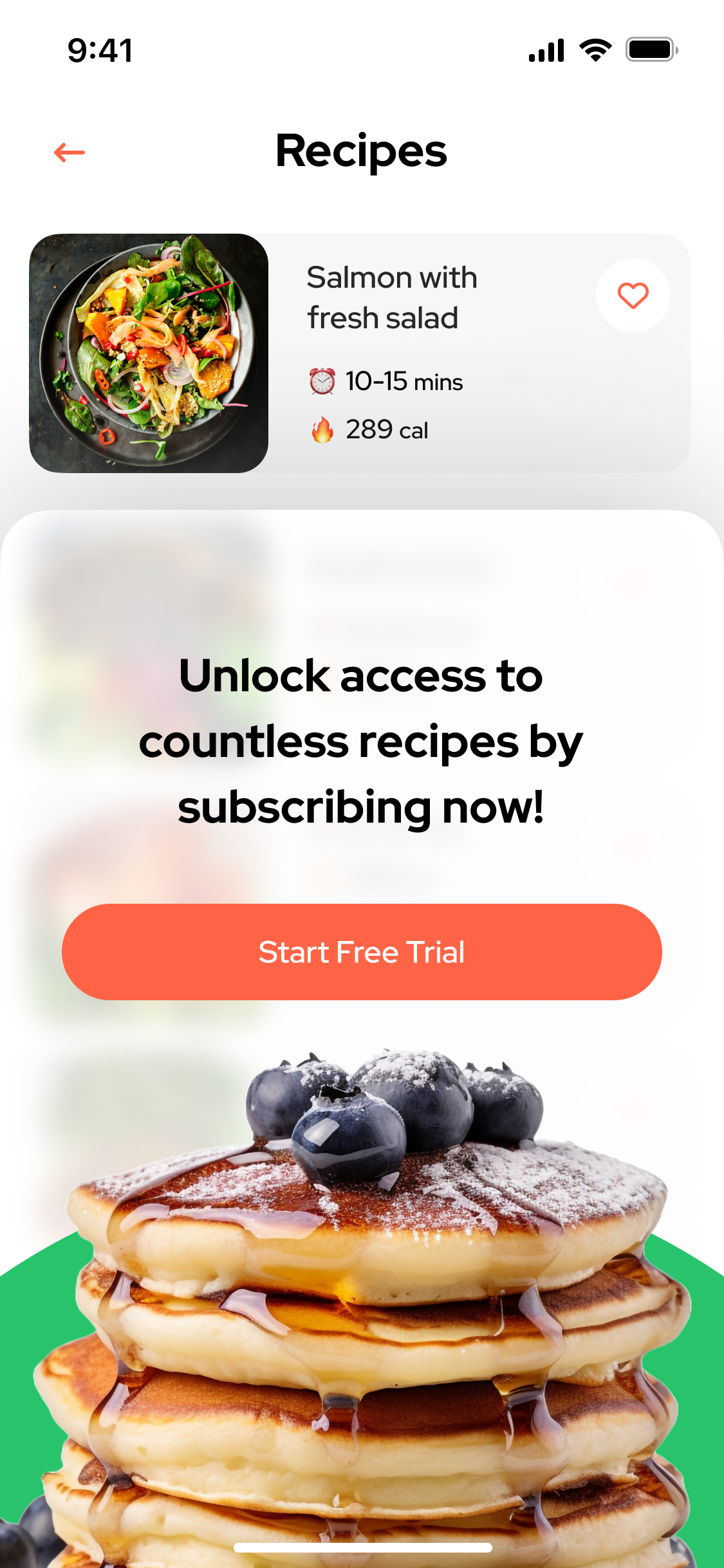
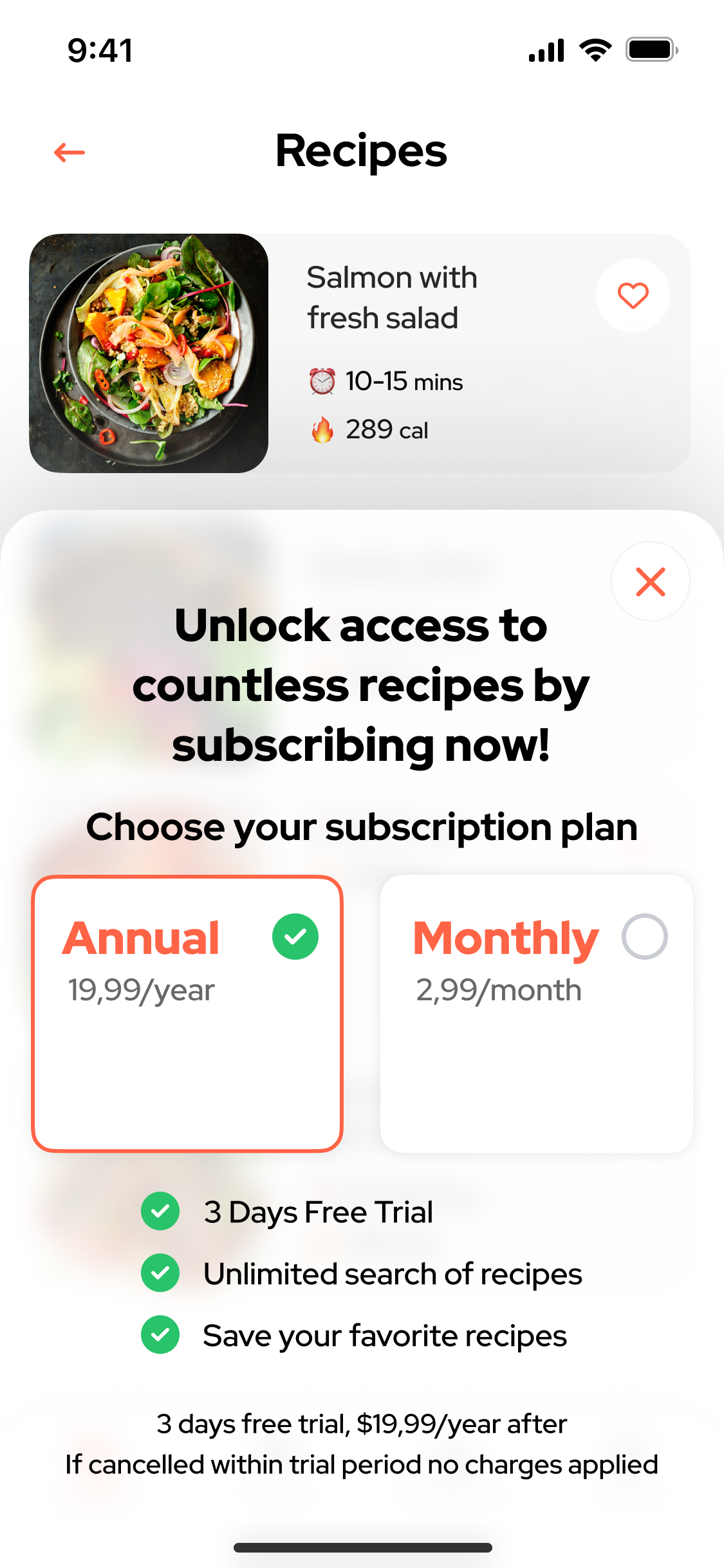
Necessary Integrations and APIs for a Cooking App
To implement all the features we mentioned above, your development team would need to integrate certain APIs (Application Programming Interface), third-party tools, and more.
You don’t need to get into the details and make all the technical decisions by yourself; your software development partner will assist you and recommend the APIs and tools that will work precisely for your app.
Here’s an overview of APIs and third-party software a cooking app might need:
Recipe APIs
Recipe APIs are essential for accessing large recipe databases. These APIs allow your app to search, retrieve, and display recipes, offering dietary preferences, cooking instructions, and nutritional information. They can also analyze ingredients, calculate nutritional values, and even create shopping lists. Popular options include Recipe by API Ninjas, Random Recipes, and Edamam, all of which provide different levels of customization and recipe diversity.
Alternatively, your team can create a recipe database exclusively for you from scratch. This option gives you full control over the quality and uniqueness of the recipes. You can collaborate with chefs, nutritionists, or cooking enthusiasts to gather original recipes that no other app will have. While this approach may take more time to build, it offers a personalized experience tailored to your app’s vision and user preferences.
Ingredient search APIs
To offer advanced search options, an ingredient search API can help users find recipes based on the ingredients they have at home. These APIs ensure that users can avoid waste by making the most of their available pantry items. Examples include Zestful API.
Allergen & dietary APIs
For users with dietary restrictions or allergies, integrating APIs that filter recipes for specific allergens or diet preferences is crucial. These APIs can offer recommendations for gluten-free, low-carb, vegan, or keto diets. The Low Carb Recipes API is a good example for this purpose.
Generative AI API
One of the most versatile options for recipe apps is a generative AI API, like GPT-4.0 API. With GPT API, you get an all-in-one solution that covers recipe generation, ingredient analysis, dietary restrictions, and even nutritional information—all in one place. Instead of integrating multiple APIs for each feature, GPT can handle various requests, from generating unique recipes based on specific ingredients to filtering them for allergies or dietary preferences like keto or vegan.
Payment gateway integration
If your app offers premium features, meal plans, or a grocery delivery option, integrating a secure payment gateway such as Stripe, PayPal, or Square is necessary. These services handle transactions securely and efficiently, making it easier to monetize your app.
Video player API
To enhance the recipe experience, especially for users who prefer visual guidance, a video player API such as YouTube API or Vimeo API can help integrate step-by-step cooking videos directly into the app. This feature can boost user engagement by offering an alternative to text-based instructions.
Image recognition APIs
If you want to introduce a fridge scanning feature, an image recognition API like Google Cloud Vision API or AWS Rekognition can analyze and recognize items in the user’s fridge and suggest recipes accordingly. This is a great feature to reduce food waste and offer a personalized cooking experience.
How to Build a Nutrition App Step-by-Step
Building a recipe app can be a seamless process when collaborating with an experienced development team that understands the food tech landscape. To help you get ready, let’s outline the essential steps involved in developing a recipe app.
Step 1: Do market research and define your feature set
Your first step involves understanding the market and your audience’s culinary preferences. Typically, your team will:
- Conduct market research to identify gaps and opportunities while analyzing your competitors.
- Investigate current trends, user needs, and what kinds of recipes are most popular.
- Create user personas to understand what features different audiences (e.g., home cooks, health-conscious users, foodies) are looking for.
- Define a feature set based on this research.
At this stage, a business analyst and UI/UX designer will work alongside you to ensure the features match the expectations of your audience, such as personalized recipe recommendations, nutritional details, or ingredient scanners.
Step 2: Create a user-friendly UI/UX design
A smooth, intuitive user experience is key for any recipe app. Your designers will ensure:
- A visually appealing layout that makes recipe browsing, searching, and saving easy.
- A simple recipe page with clear step-by-step instructions, images, and videos.
- A tailored experience based on the audience — for example, designing for nutrition-focused users with health goal tracking and diet filtering.
Perpetio's design team usually relies on user feedback and the latest trends to craft designs that are both functional and engaging.
Step 3: Develop the app
Now it's time to bring the designs to life. Depending on your goals and budget, you can decide between native or cross-platform development. Native apps (for iOS or Android) offer top performance but require more resources, while cross-platform development lets you create a single app for both platforms.
During development, your team will integrate various APIs for:
- Ingredient search
- Recipe and nutrition databases
- Fridge scanners
- Grocery lists
- Social sharing
Perpetio’s team also ensures your app is scalable and can handle data integration, whether it's adding user-generated recipes or connecting to smart kitchen devices.
Step 4: Test the application
Before going live, testing is essential to catch any bugs and ensure a flawless user experience. Your QA team will:
- Test different recipes, ingredient searches, and personalization features to ensure smooth functionality.
- Check the app on different devices to guarantee compatibility.
- Fine-tune the app’s usability, fixing any glitches and ensuring a high-quality product.
Testing is crucial to ensure your app functions smoothly for all users, enhancing its overall appeal.
Step 5: Launch and gather feedback
Once your recipe app is live, the job doesn’t end there! Gathering feedback from your users is key to improving the app. You’ll want to focus on continuous updates and adding new features that your users request, such as more recipe suggestions or a more advanced shopping list feature.
With these steps, you’ll have a cooking app that stands out in the crowded market and meets your audience’s needs. Ready to start? Get in touch with Perpetio for a free consultation!
Perpetio’s AI Chef’s Cookbook App
At Perpetio we love cooking and even more love helping others cook with ease. Plus, we love making things convenient with AI.
That’s why we developed our own cooking app that utilizes the advantages of AI generation to create personalized recipes based on user parameters, such as available ingredients. The app features an ingredient list selection, allowing users to choose what they have on hand, and offers step-by-step recipe guidance to make cooking simple and enjoyable.
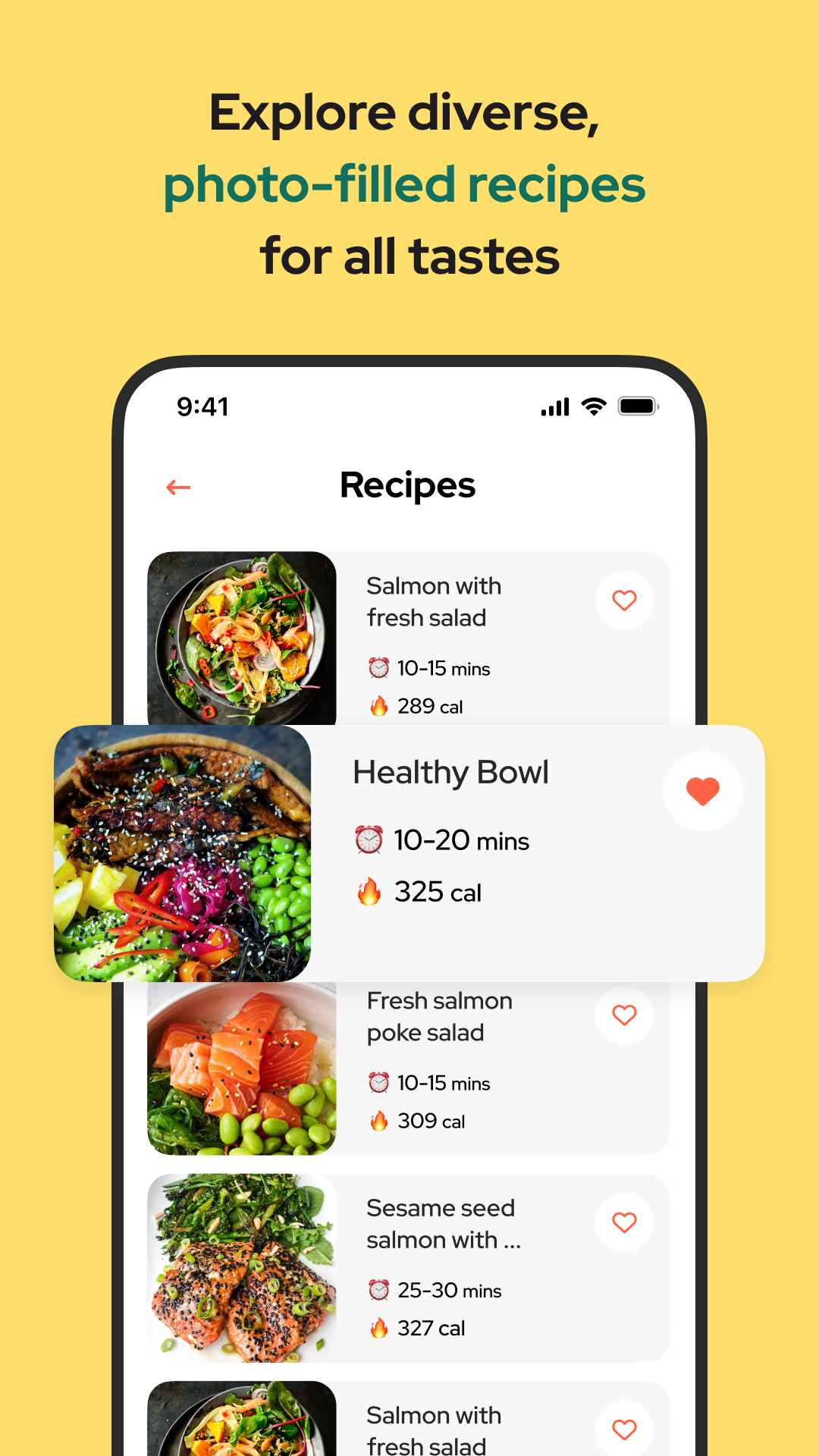
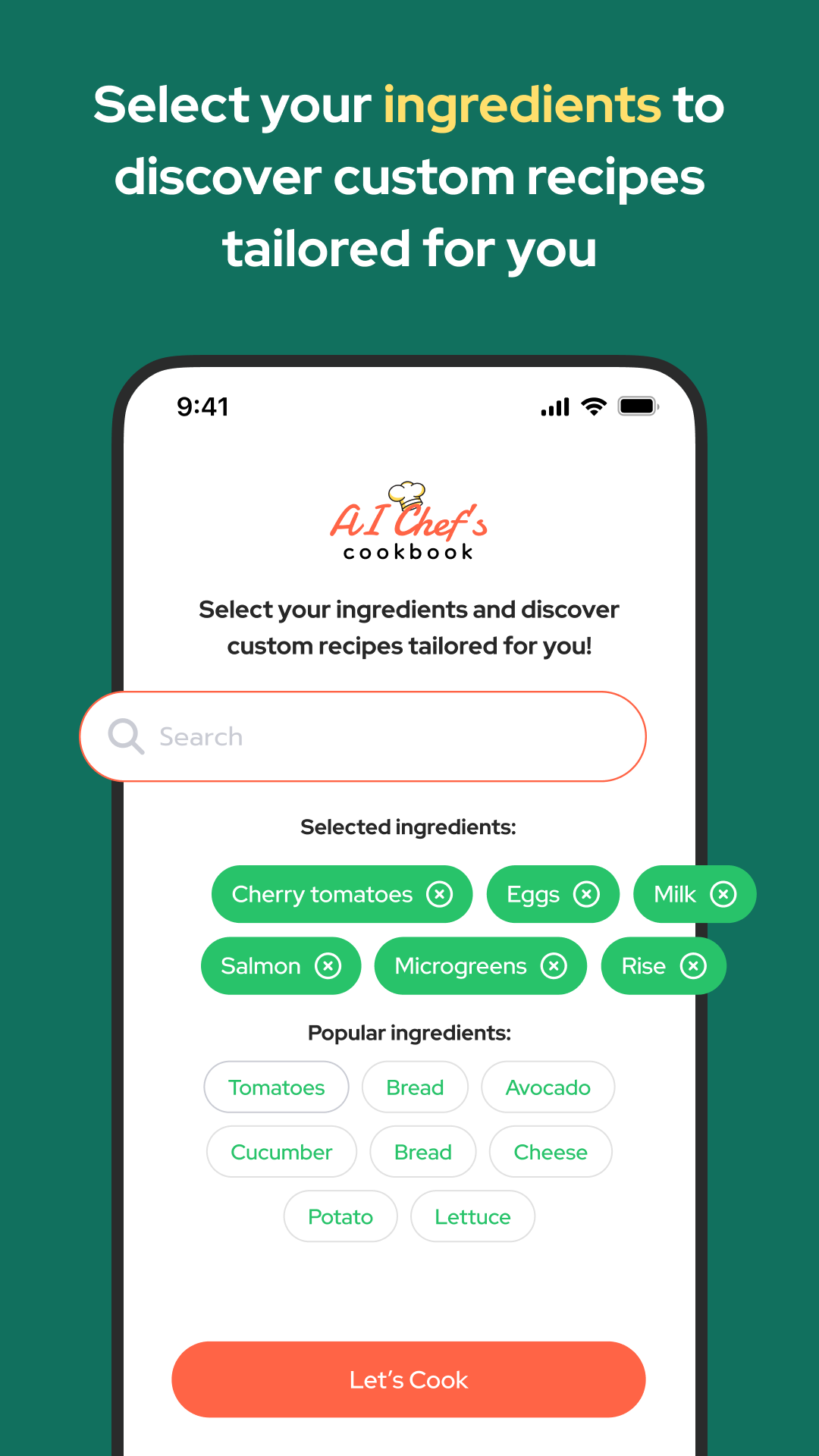
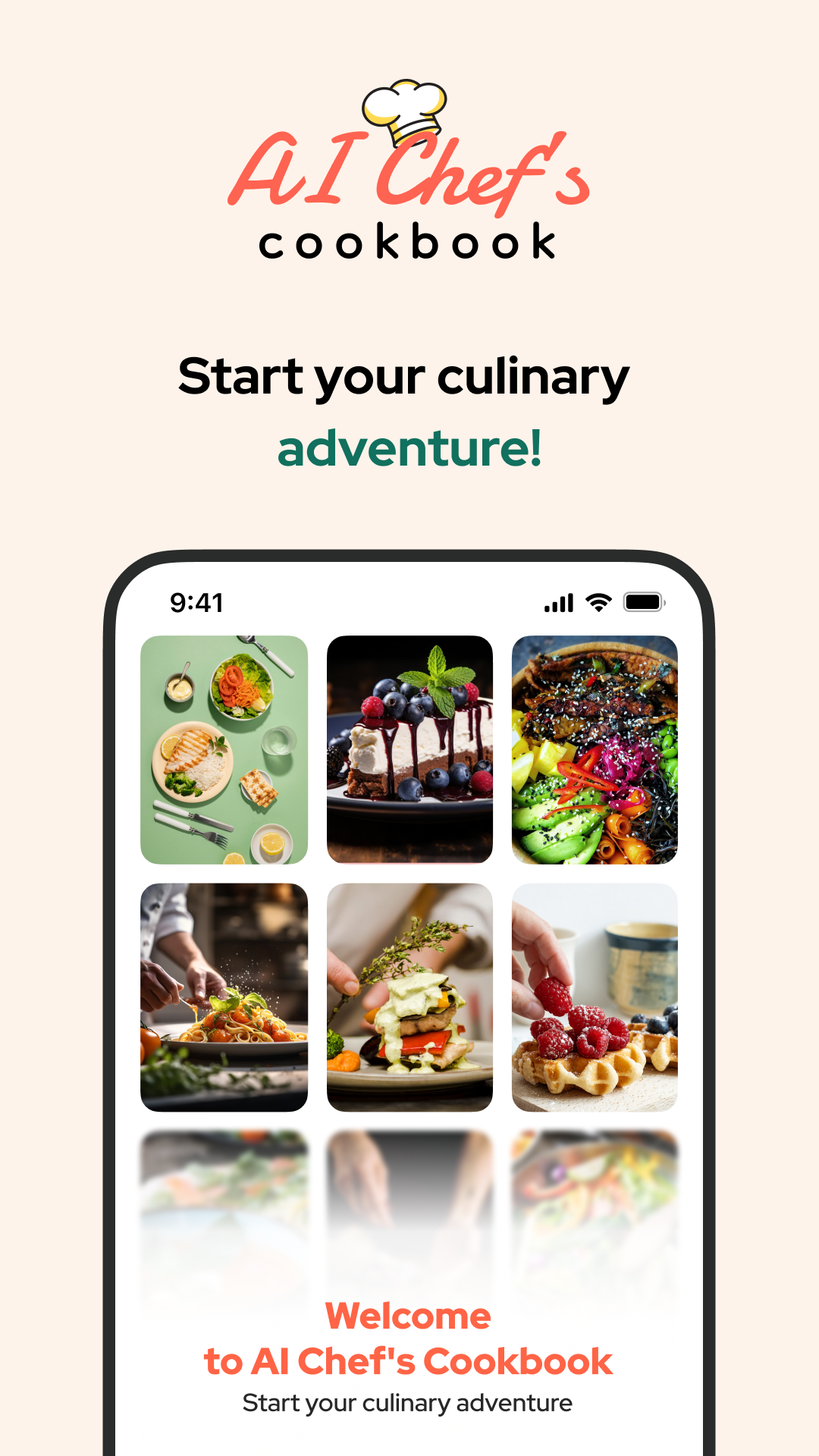
With AI integration, users receive tailored recipe suggestions that consider not only their selected ingredients but also their dietary preferences and saved recipes. The fridge scanning feature lets users quickly identify ingredients they already own, minimizing waste and enhancing creativity in meal planning. Additionally, the app includes a shopping list function that suggests products to add based on users' saved recipes, streamlining the cooking process and making meal prep even more efficient.
Let’s make your users happy with simple and personalized recipes. Contact us to get a free estimate for the development cost of a cooking app.
